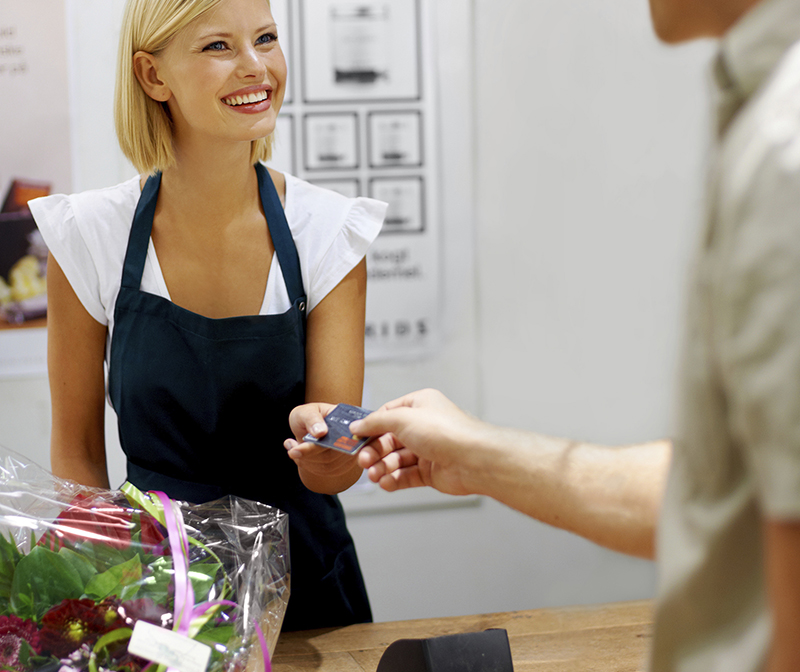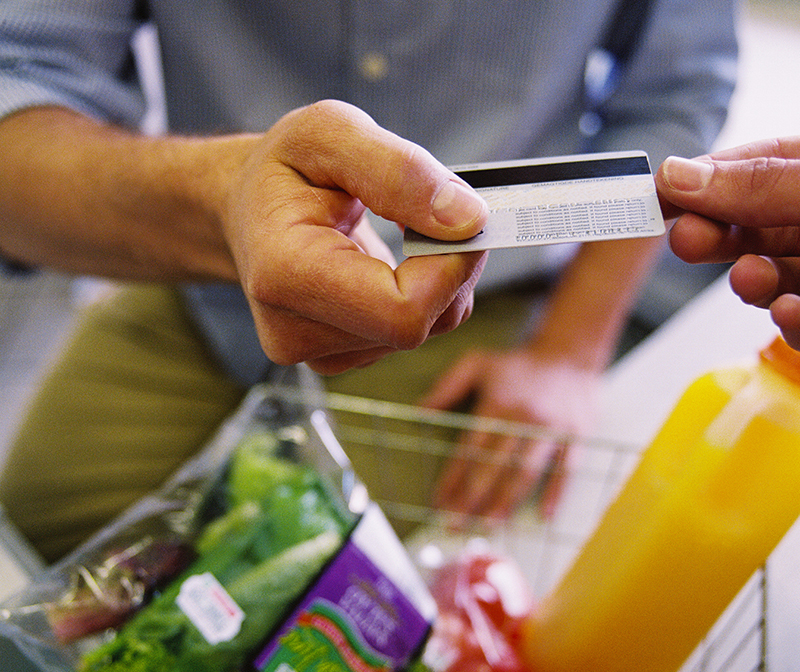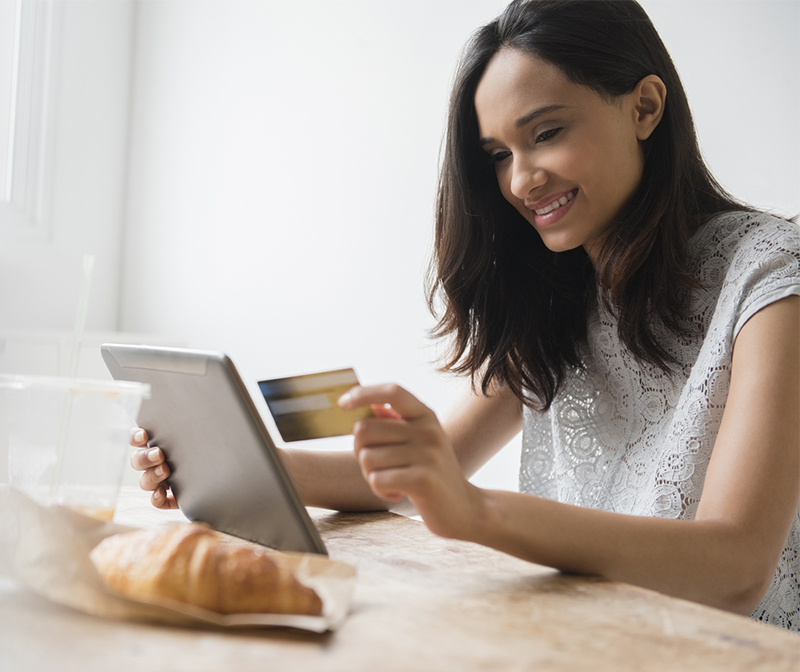Technology has already made a huge impact on the way consumers shop and make payments today, and more change is coming. Businesses that want to thrive in this evolving landscape need to implement payment strategies and invest in technology that will help them retain and attract customers, as well as compete in the marketplace.
While in the past loyalty programs were expensive to run and difficult to manage, loyalty programs are now integrated into POS systems making it easy to track individual customer payments and deliver personalized rewards.
The most popular programs offer consumer’s spending and payment-based rewards to incent them to choose their brand and/or use their card.
Credit Card Rewards Programs
- Credit Card Rewards Programs
- Merchant-branded Card Rewards
- Gift Cards Linked to Loyalty Programs
Merchants also integrate rewards into their branded card programs. While Amazon and Old Navy offer open-loop cards in partnership with Visa that can be used anywhere, cardholders only receive points for purchases made from the issuing merchant. Other retailers offer closed-loop cards not affiliated with a card network. This lowers transaction fees for the merchant and allows them to offer customers better perks.
Target’s REDcard gives cardholders a 5 percent discount off almost every item purchased (some exclusions apply). It is unique in that it is offered both as a credit card and as a debit card. With the credit card, consumers charge their Target purchases and receive a monthly bill. With the debit card, purchases are deducted from the consumer’s linked checking account. Many other retailers including Macy’s, Nordstrom and Kohl’s also have rewards programs attached to their credit cards.

The increasing popularity of gift cards has turned the gift card into true branded currency. Merchants are capitalizing on this by offering reloadable closed-loop gift cards linked to their loyalty programs. Once a card is purchased, the cardholder can add funds to it online, on an app or in-store. Anytime they use it to make a purchase, their loyalty account is automatically credited. Starbucks’ loyalty-linked reloadable gift card is a great example of this, and its success is incenting additional merchants to follow suit.

Consumers today expect every purchase they make, regardless of payment method or channel they use, to occur seamlessly. Technology is making that possible by integrating payments into the buying experience.
Websites, apps and consumer devices are securely storing payment information so there’s no need for a consumer to grab their wallet, find their checkbook, or enter personal information. For the consumer, it’s about speed and ease. For merchants, it translates into more payments and greater profits.
Omni-Commerce technology enables consumers to seamlessly connect their shopping experiences, even in process, from one device to the next device. So, when a consumer reloads a gift card on their tablet, it shows up on their car dashboard, and on their phone when they arrive at the merchant.
How Omnichannel Commerce Works
For instance, First Data partners with Independent Software Vendors (ISVs) to set up digital payment-enabled apps for Quick Service Restaurants (QSRs) so customers can order in advance from their car dash or mobile device, and pay with their phone at the drive-thru or in-store.
First Data is also working with car manufacturers to perfect the technology to bring a truly “connected car” to consumers, to not only let drivers know when they need an oil change, but to also deliver a coupon from a nearby auto shop, schedule an appointment, and pay for it.
Amazon Echo and Google Home offer a glimpse into the future of shopping and payments. These digital smart assistants link consumers to other smart devices and enable users to simply tell them what they want to purchase, for example, “Google, order paper towels.” As long as the item is available from a partner merchant, the device handles the rest of the purchase using stored information.
Eventually, these assistants won’t even require consumer interaction because they’ll be linked directly to home appliances via the Internet of Things (IoT).
As more and more physical objects are embedded with software, sensors and network connectivity, the IoT will grow to a point where appliances will be able to sense when a staple product is running low. Refrigerators will be able to order milk while washing machines will be able to order detergent.
The phenomenal rise of sharing services, subscription services, and gig services has created a new economy – one that's driven by recurring payments that occur without any action required of the consumer.
Whether they're renting a house on the beach on Airbnb, receiving a package of dog treats monthly from BarkBox or ordering a ride from Uber, once the consumer sets up payment the first time, every payment from that day on just happens, safely and securely.
The sales data businesses collect every day helps them make better decisions and create more successful strategies. Capitalizing on this data used to be expensive and time-consuming, but today, businesses of any size can integrate technology that collects and reports data into their payments platform.
Armed with tangible information on their sales and their customers, businesses can not only identify growth opportunities, they can also create more personalized marketing to generate sales and build loyalty.
As big data continues to grow, so do the privacy laws of major unions, countries and states, as we have seen with the General Data Protection Regulation (GDPR) in Europe, and now with the California Consumer Privacy Act of 2018 (CCPA). These regulations require organizations to obtain consent from consumers to collect and use their data.
One way merchants are capitalizing on their data by is by creating rewards personalized to match the exact tastes and habits of their customers – and delivering them when they’re most relevant. Merchants, like Starbucks, have integrated geo-location marketing into their apps to enable them to deliver real-time offers whenever a customer is near one of their locations.
They make sure the offer is enticing using personalization tools that analyze the customer’s existing data paired with artificial intelligence (AI) that predicts behavior based on previous behaviors. This way, a customer won’t get an offer for a free caramel macchiato if they consistently order double espressos.
Source
1 “How Cash Back Credit Cards Work,” Creditcards.com, 29 January 2018
